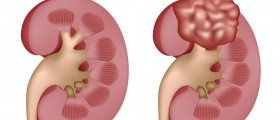
The cells forming our kidneys become dysfunctional, die and get replaced by new, healthy ones. However, sometimes this process is not successful due to new cells being produced even when not needed, or old, bad cells, continuing to live. Then, growths appear on the kidneys, being called kidney mass. There are two major types of kidney mass, one being benign and the other one malignant, causing cancer.
Types of Kidney Mass
Kidney cysts which may appear, when benign, are not cancerous and do not trigger any serious health problems. These cysts may contain kidney fluid or fat, vascular or muscle tissue. These are surgically removed and usually do not reappear nor spread onto other body parts.
On the other hand, malignant kidney mass may be deadly, being a much more serious problem, known to grow back even after being removed and treated. Also, malignant cells from kidney tumors may enter one's blood stream, potentially affecting other organs and body parts as well, forming tumors. In fact, when a malignant kidney tumor reaches metastasis this spreading of the disease takes place leading to dysfunctions of many other organs.
Alternatively, some people may develop more than a single cyst on their kidneys. This condition is known as polycystic kidney disease, being genetically transferred, potentially affecting the liver and triggering abnormal growth of the kidneys, leading to lesions too. Either way, timely treatment is crucial for treating kidney mass. Therefore, as soon as you notice any of the symptoms of this health problem, you are advised to seek medical assistance.
Signs, Treatment and Diagnosis
Common signs of kidney problems are pain in the area, blood in the urine or urinary retention. The symptoms are more or less the same for both malignant and benign kidney mass presence. With renal cell carcinoma being one of the most common killer diseases, timely diagnosis and treatment are crucial.
Sometimes, the symptoms may indicate presence of kidney stones, which are not comprised of cells but rather of minerals which crystallize. Alternatively, kidney issues may be mistaken for prostate problems, again due to the similarity between symptoms.
All in all, check your overall health regularly and never diagnose yourself with nothing unless you have professional back-up. Kidney mass can appear at any time, even when you do not show any symptoms at all. Thus, you need to be careful and keep this in mind. Men, for example, should have their prostates checked regularly, at least once a year, since renal problems may affect this area too.

















Your thoughts on this
Loading...